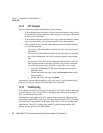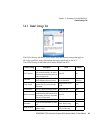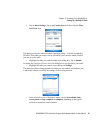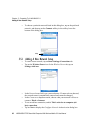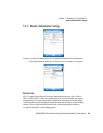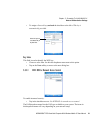
Chapter 5: Connecting To A LAN With 802.11
Network Authentication Settings
90 WORKABOUT PRO Hand-Held Computer With Windows Mobile 5.0 User Manual
Under Shared authentication, each wireless station is assumed to have received a
secret shared key over a secure channel that is independent from the 802.11 wireless
network communications channel.
Under WPA and WPA-PSK authentication, the use of 802.1x authentication is
required. For wireless networks without a Remote Authentication Dial-In User
Service (RADIUS) infrastructure, WPA supports the use of a preshared key. For
wireless networks with a RADIUS infrastructure, Extensible Authentication
Protocol (EAP) and RADIUS is supported.
Data Encryption
WEP (Wired-Equivalent Privacy) encryption prevents others from accidentally
accessing your network. If you are not using encryption, you can choose Disabled
from the dropdown encryption menu. Otherwise, leave this field as is.
Note: WEP cannot be disabled if you are using WPA or WPA-PSK authentication.
TKIP (Temporal Key Integrity Protocol) is an encryption protocol included as part
of the IEEE 802.11 standard for wireless LANs. Designed to enhance WEP, TKIP
uses the original WEP encryption but ‘wraps’ additional code at the beginning and
end to encapsulate and modify it, encrypting each data packet with a unique
encryption key.
Network Key
This text box is used to specify a 5 or 13 ASCII character sequence or an equivalent
10 or 26 Hexadecimal digit sequence that matches the active WEP key on the
access point.



